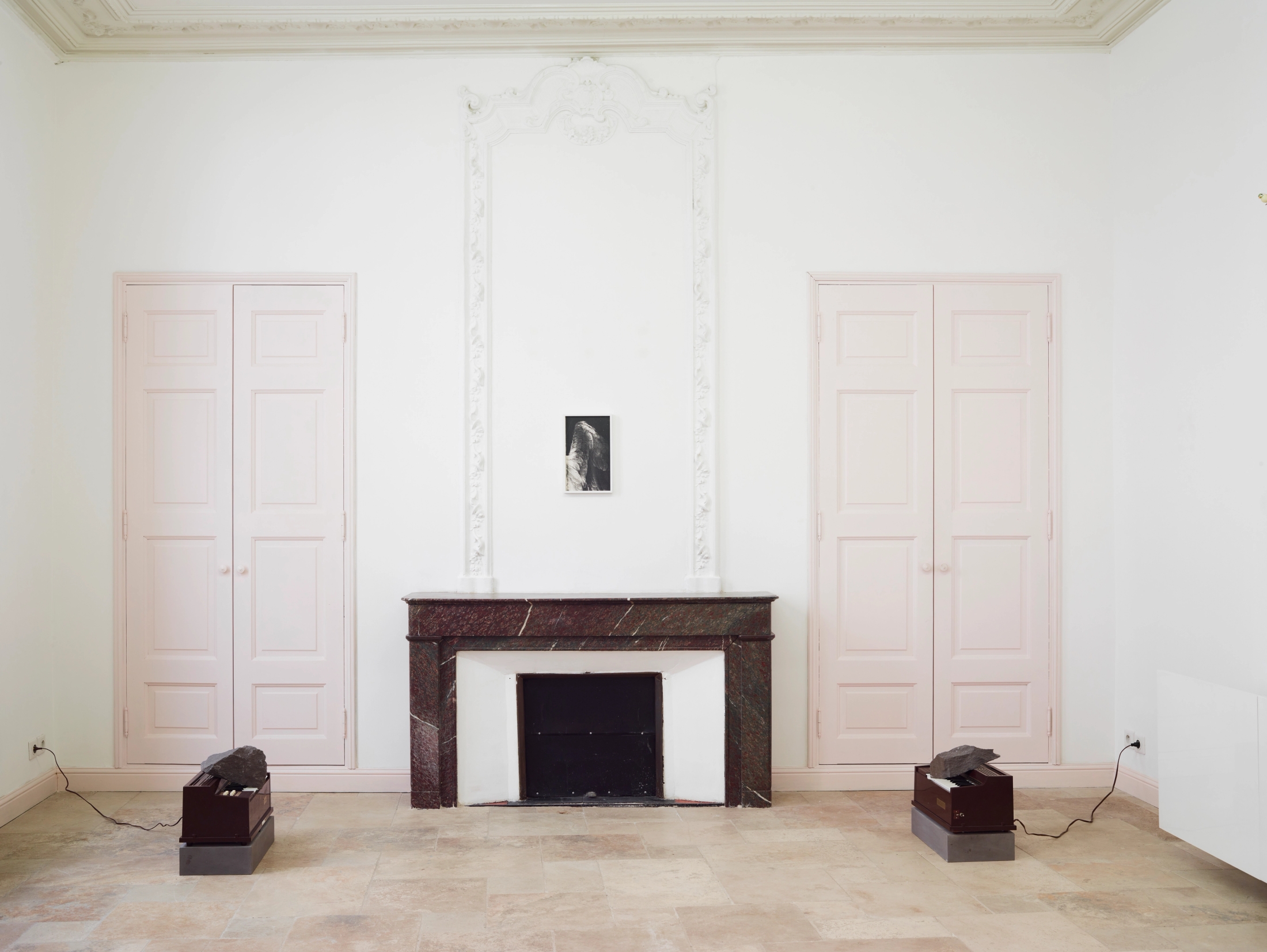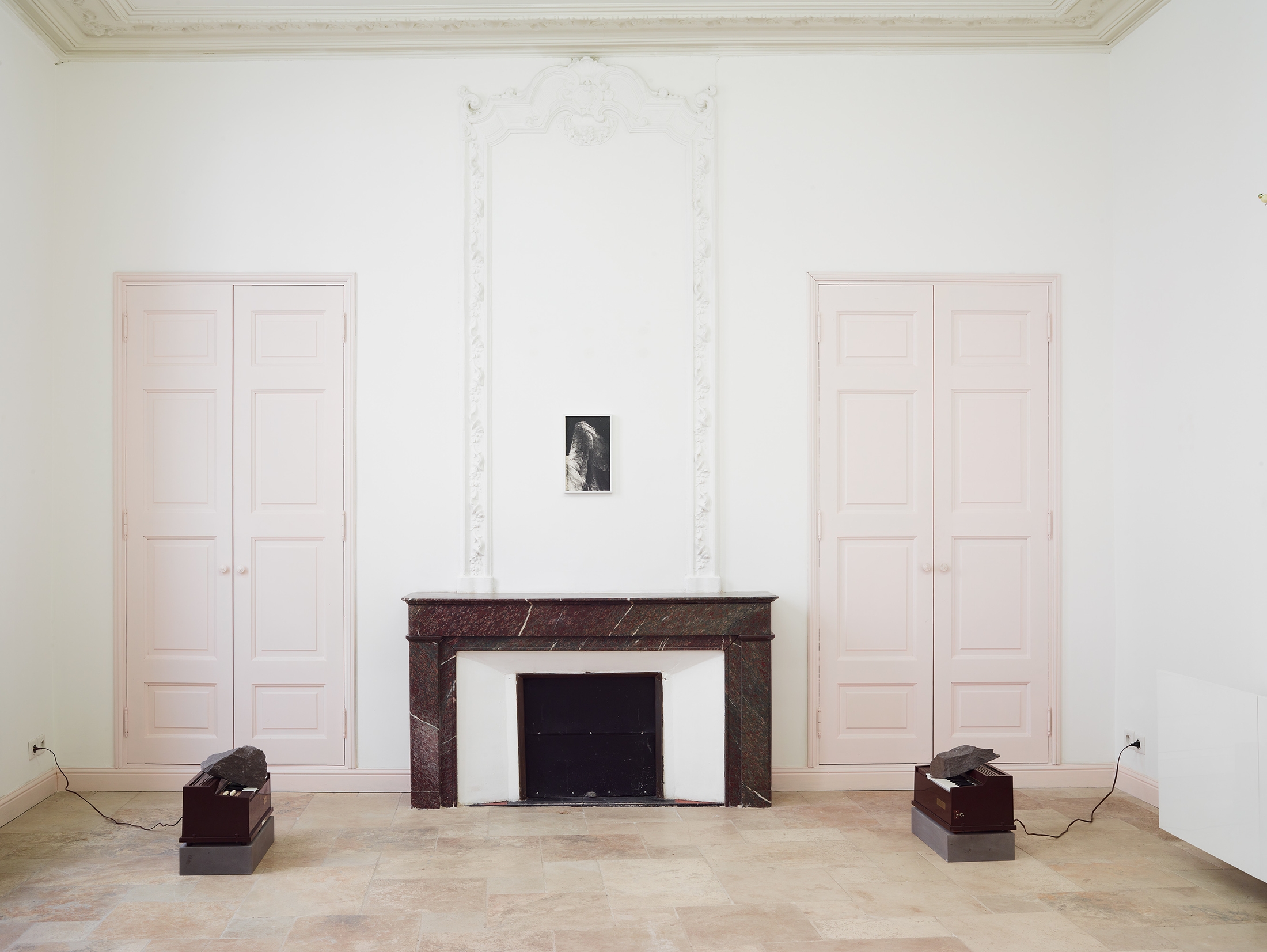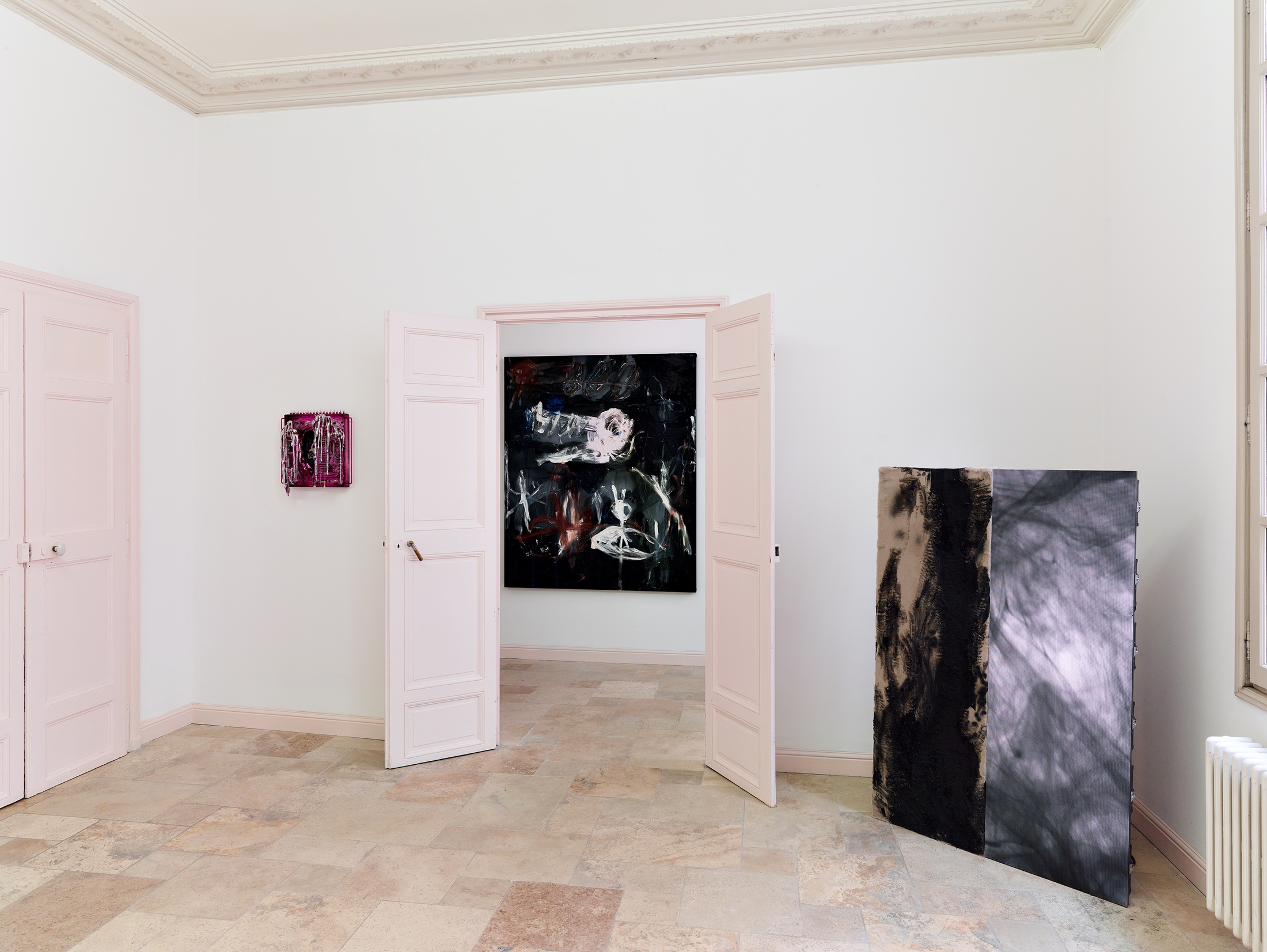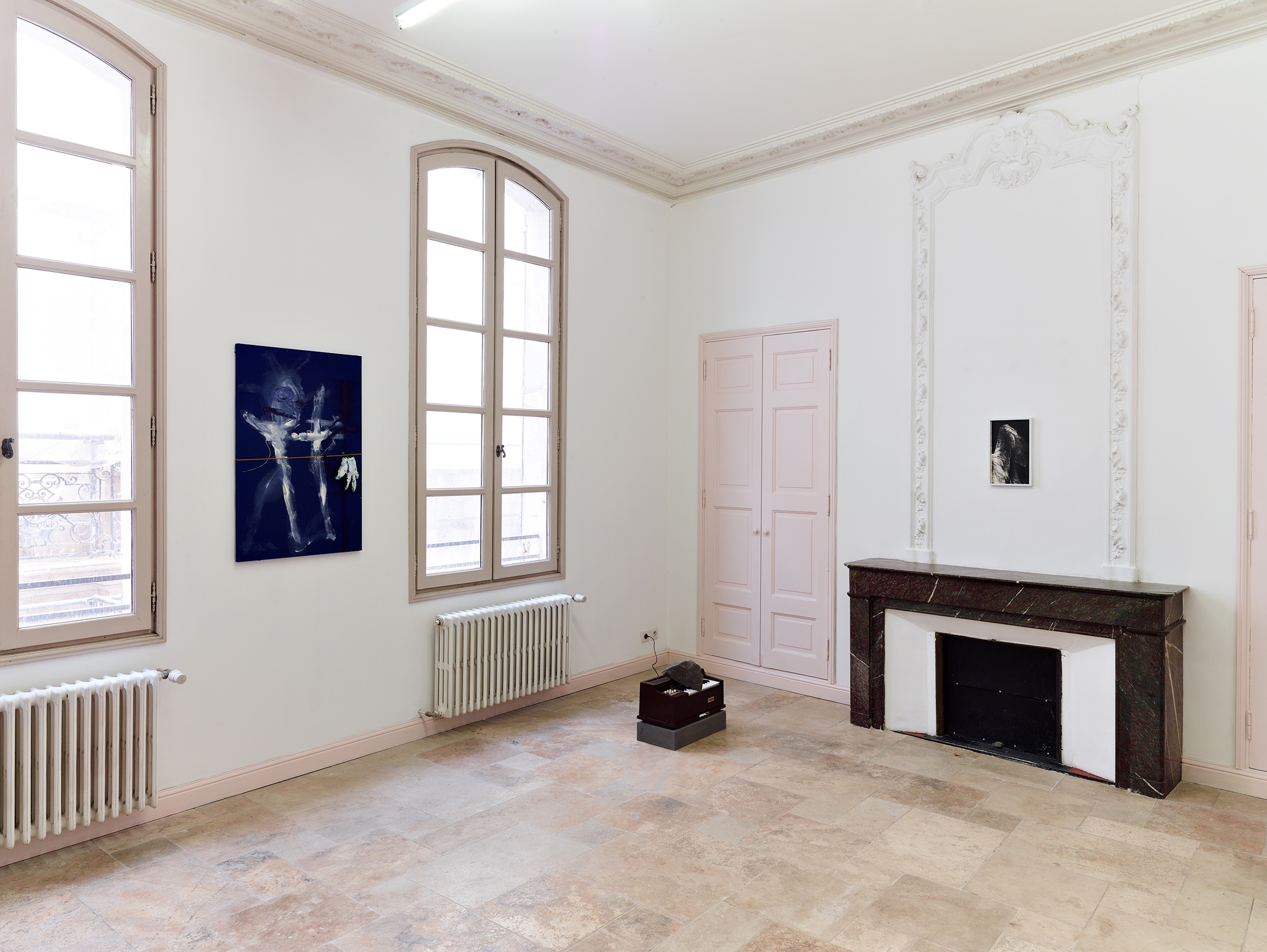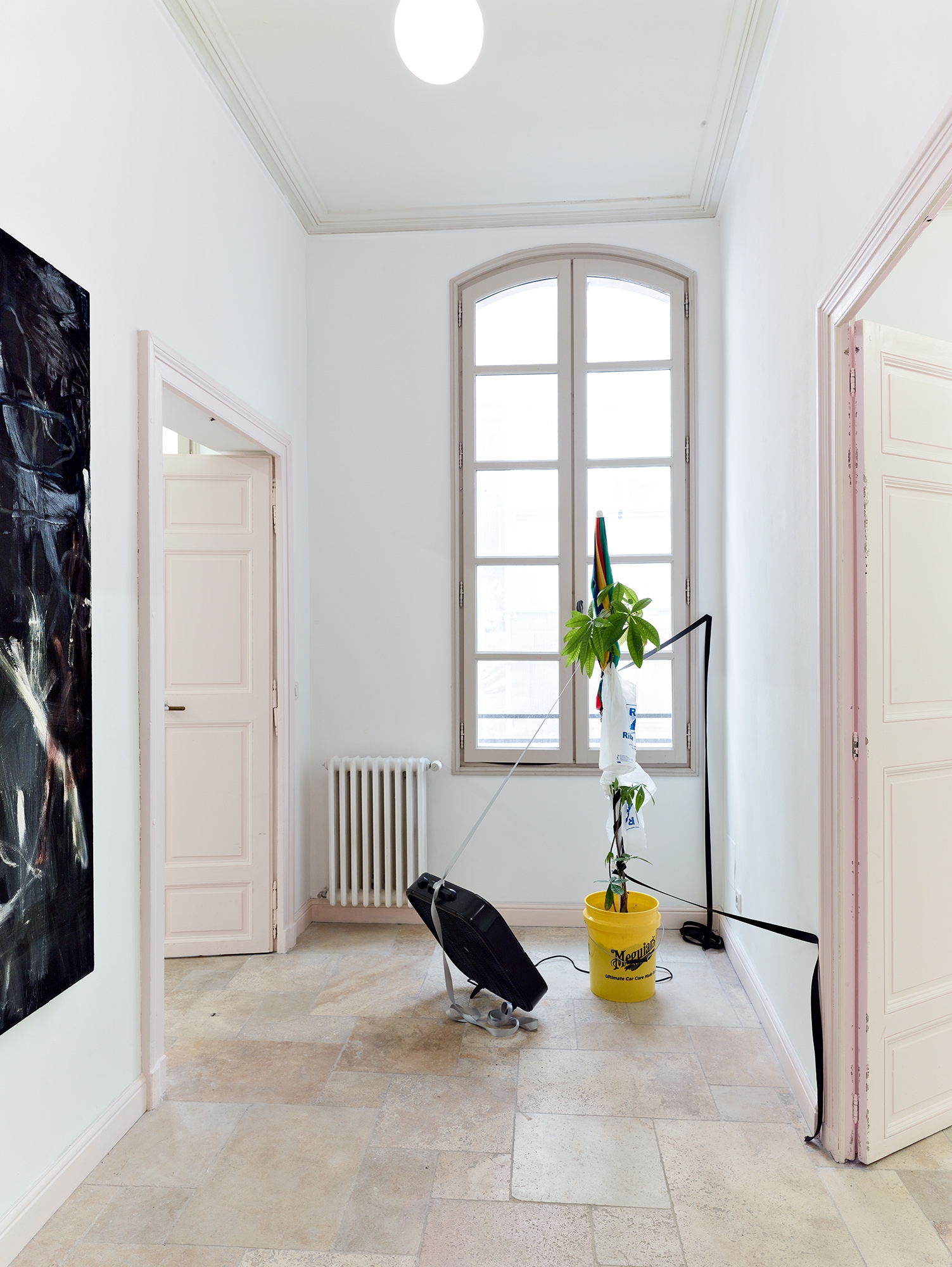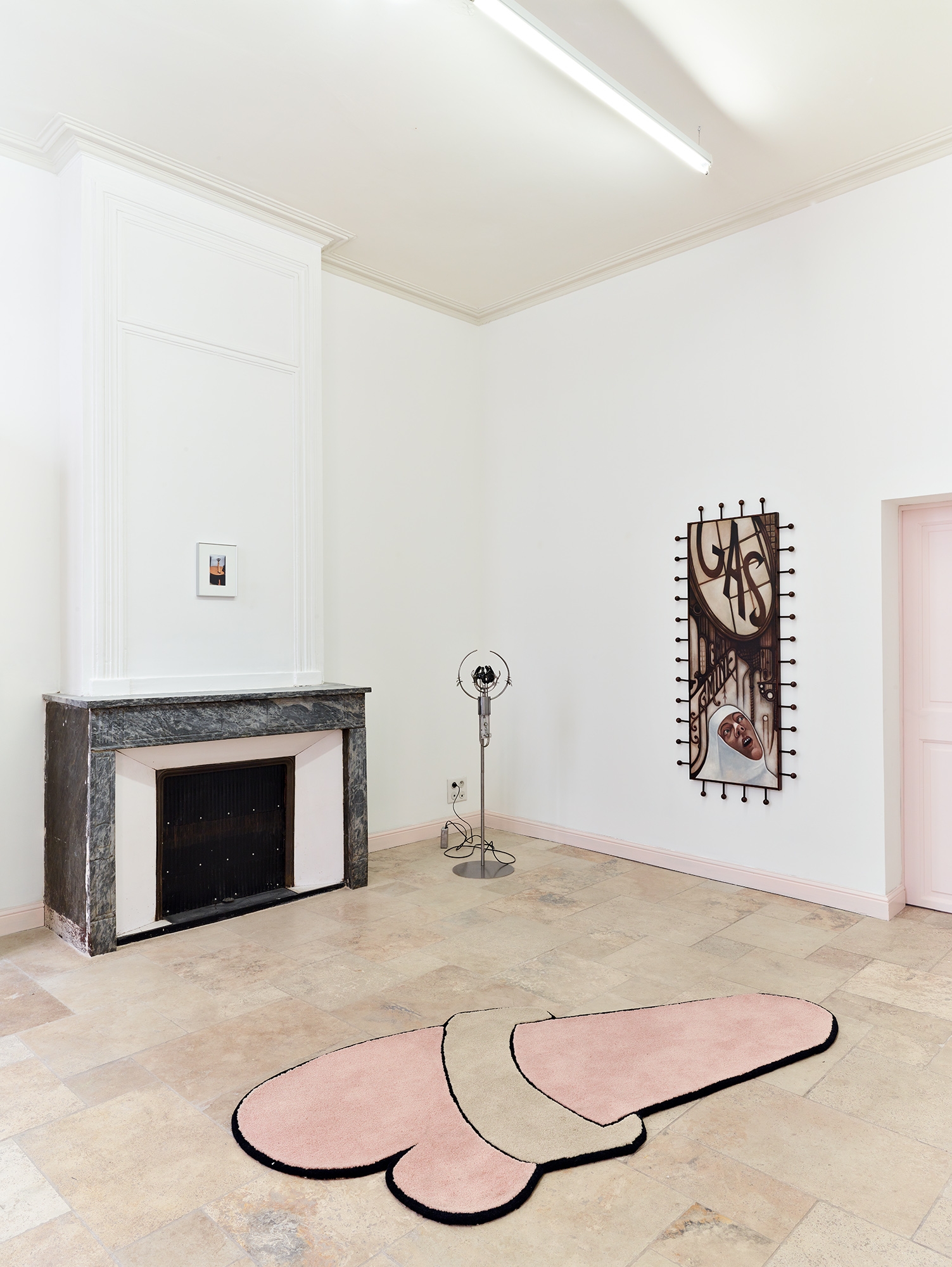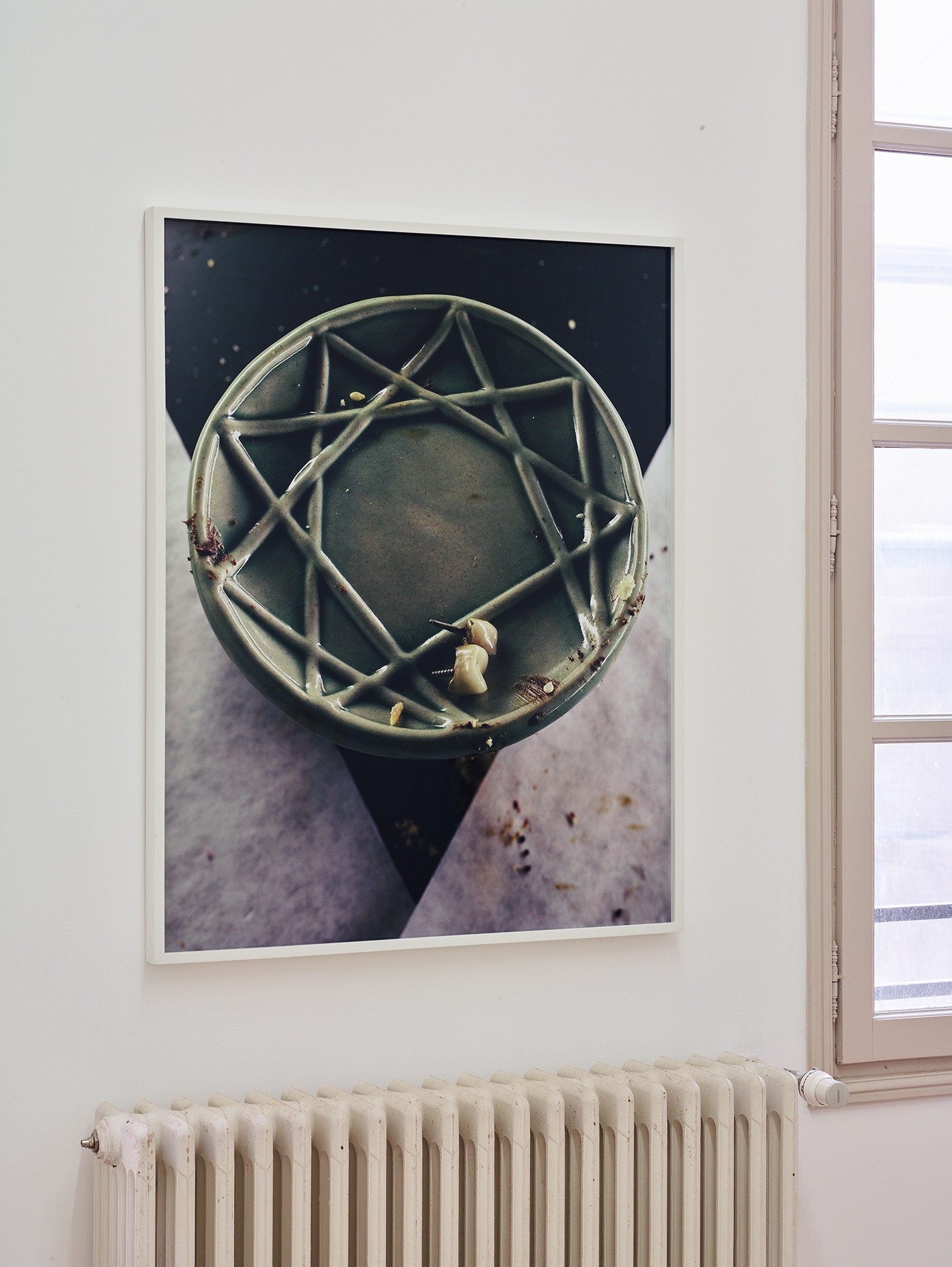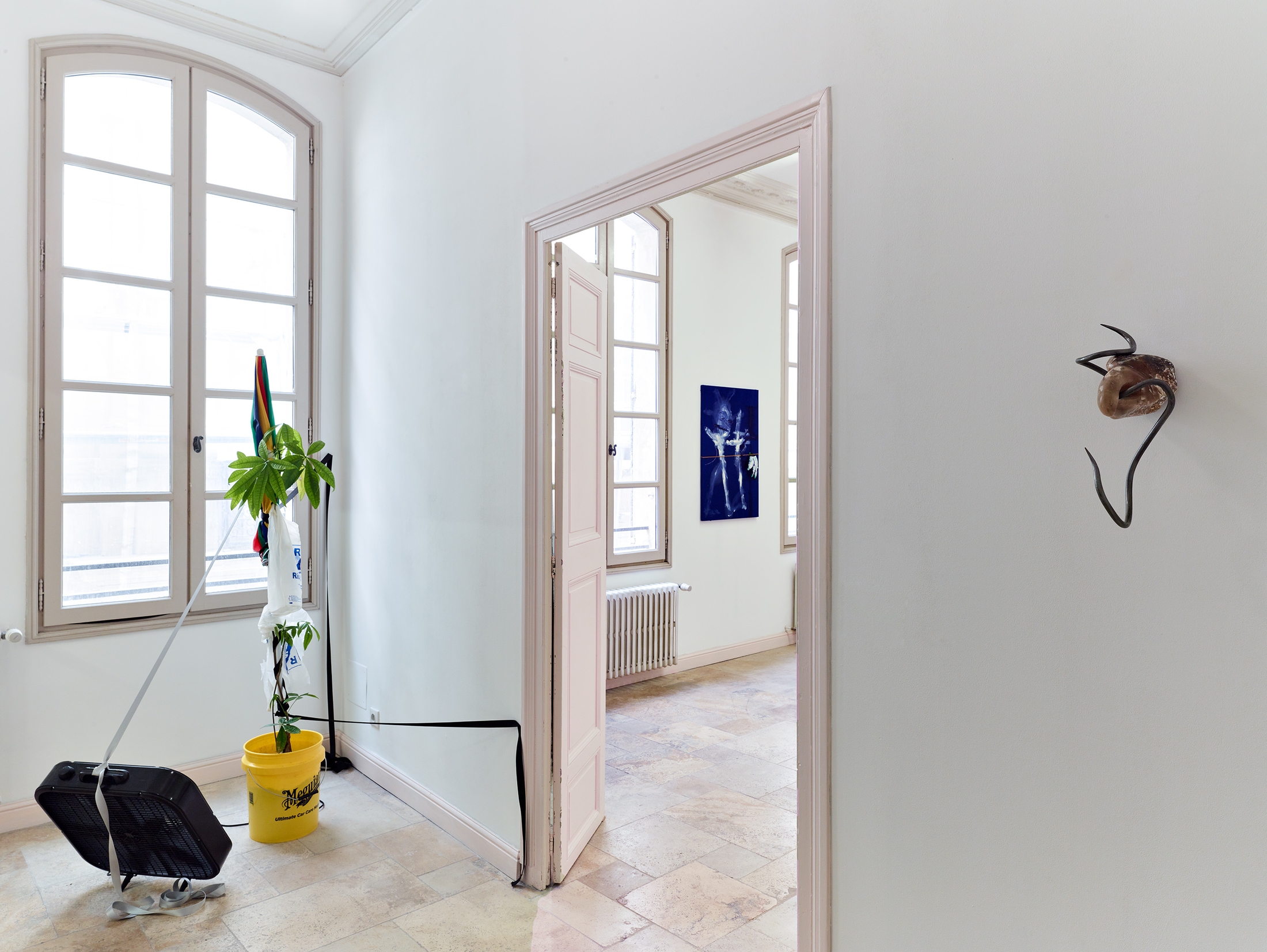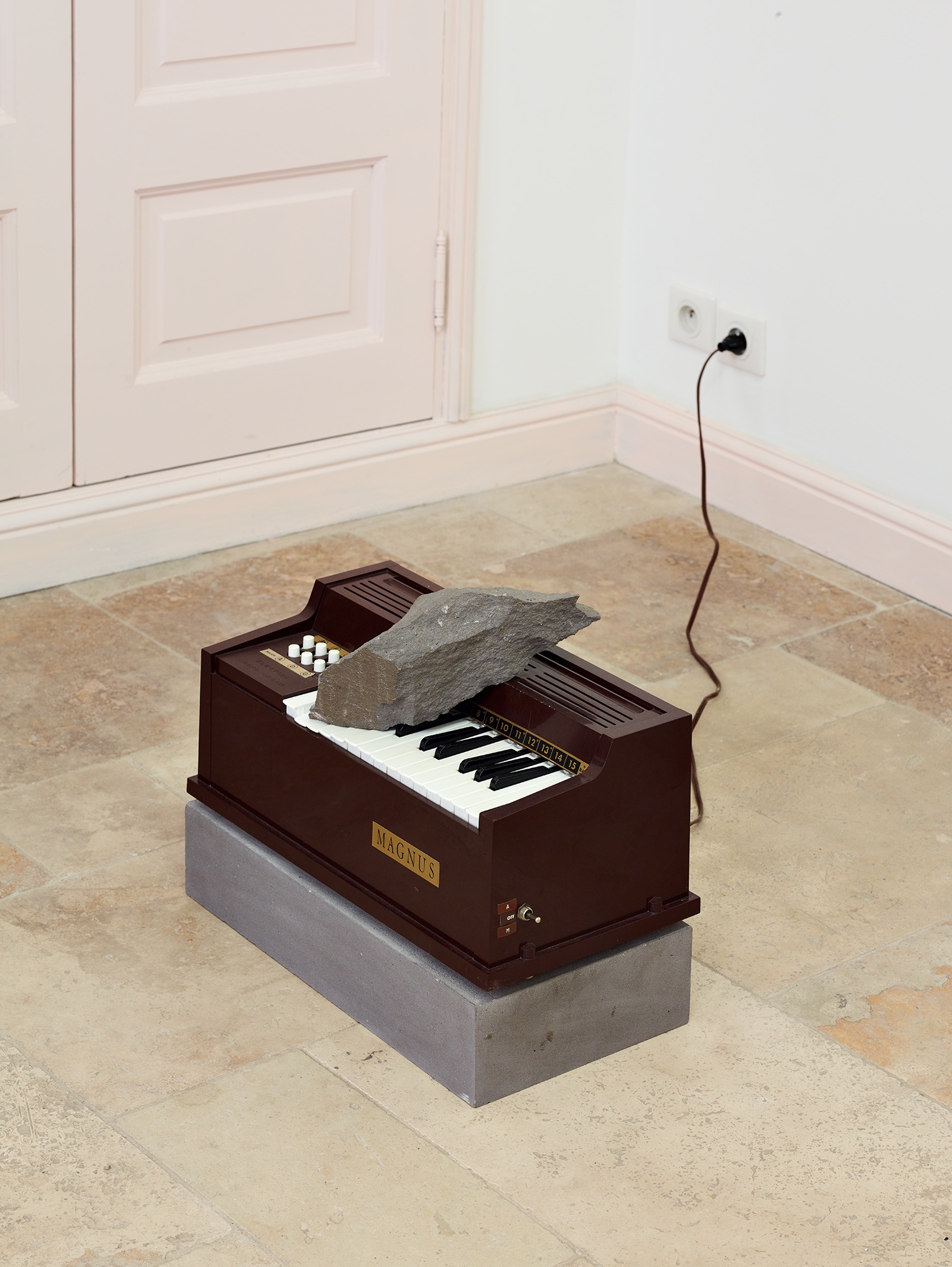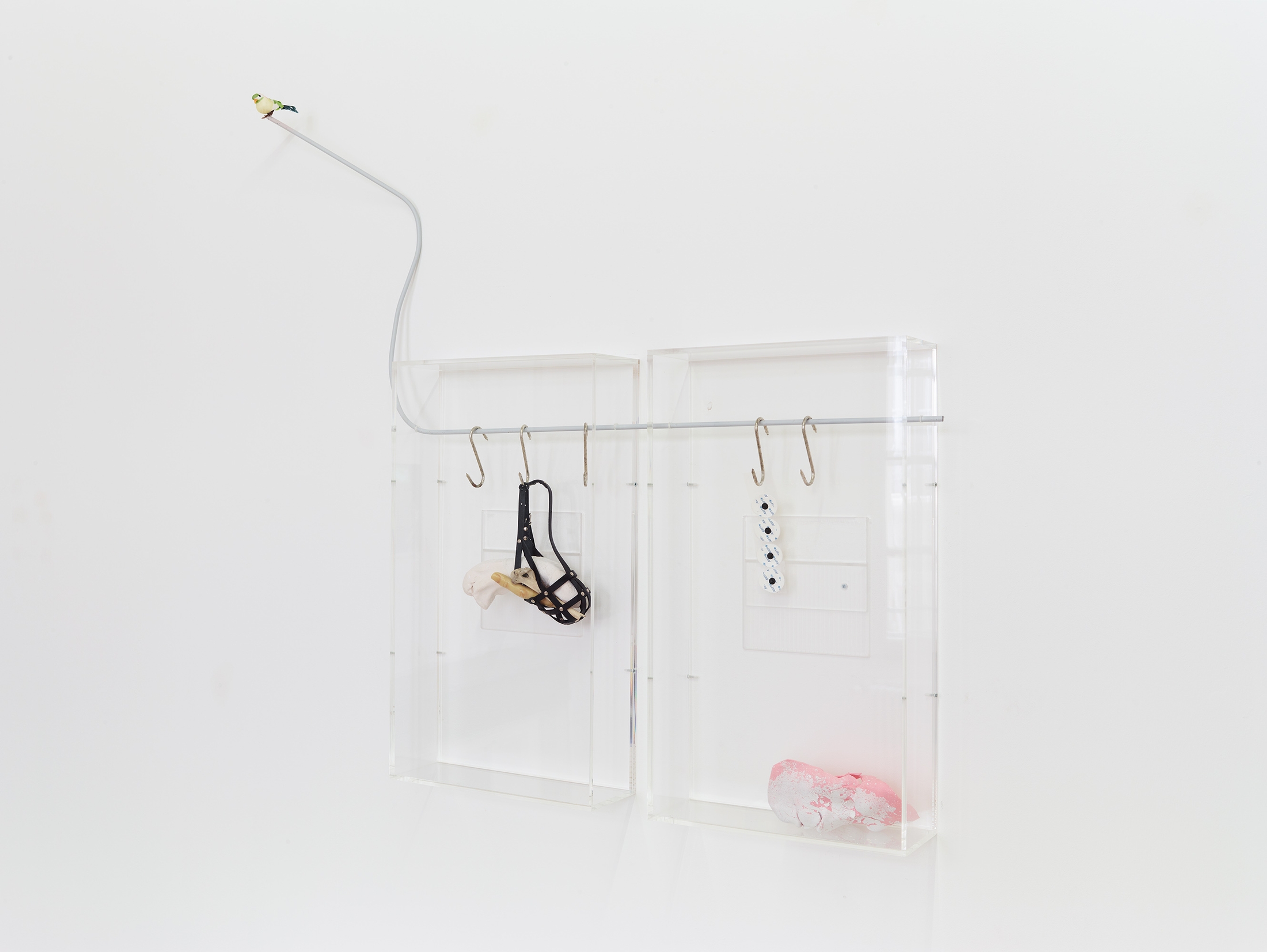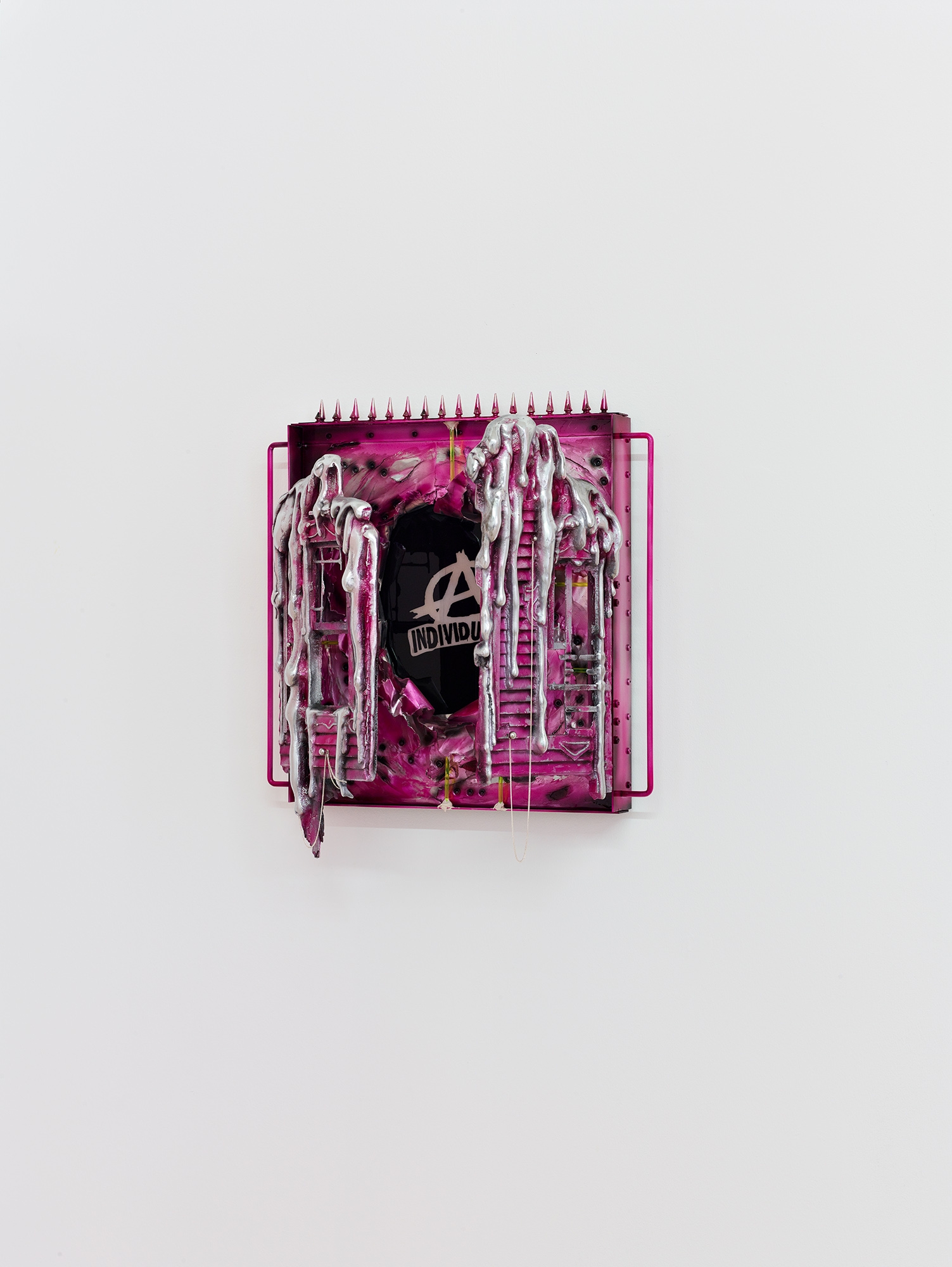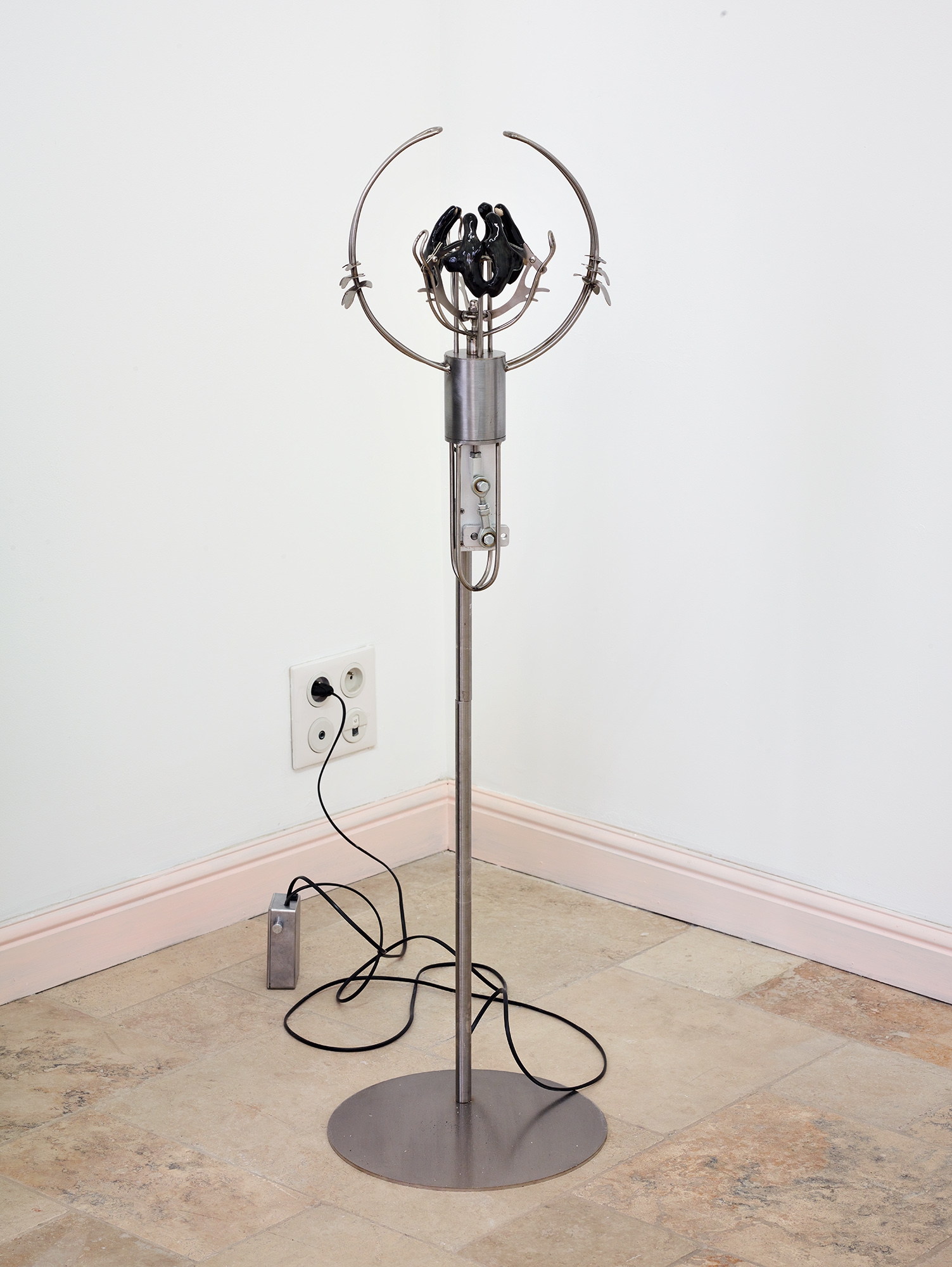Omar Castillo Alfaro, Mathis Altmann, Jean Claracq, Adriano Costa, Léa de Cacqueray, Jesse Darling, Julian Farade, Justin Fitzpatrick, Pati Hill, Angelica Mesiti, Mel O'Callaghan, Megan Plunkett, Torbørn Rølland, Philipp Timischl, Trevor Yeung
The devil often whispers at night. Backbiting is seductive, and the villain's allure shines brightly. In the Russian version of 101 Dalmatians, Cruella is called Stervella - a name that refers to the Russian word for bitch. The temptation to malice indeed spares no one. This exhibition is precisely in line with this untimely desire to indulge in cruelty for a moment, to give free rein to the pleasure of biting the other to the quick. The violent gesture can also bring relief.
We are all, to very different degrees, confronted with violence on a daily basis, whether it manifests itself in our most ordinary interactions, through media representations, or is induced by various systems of structural domination. In recent years, awareness of these multiple registers of violence has, at last, given us a new perspective on the continual struggle of marginalized bodies. Fear even intrudes into our safe spaces. Aggression - observed, absorbed and experienced - leaves our nerves on edge. If impotence sometimes seems to exhaust our strength, anger is well and truly on the flames - when will it be brought to the boil?
CRUELLA DE-VIL is not intended to theorize violence, but rather to question the way in which this physical energy invades our bodies, and how the body exhales it. What is the mark of violence on our days, on our minds, on our muscles? How do we get out of this visceral entanglement of negative emotions without falling into the reproduction of violence? How can we develop a language for what cannot be expressed in any other way?
Antonin Artaud refers to the Theatre of Cruelty as a new aesthetic form that breaks down the boundaries between good and evil, and takes hold of "everything that is in love, in crime, in war, or in madness." The ferocious instincts and bestial energies that lie dormant in all of us are summoned to the stage. At the point of wear and tear to which our sensitivity has reached, we need to develop "a new art that wakes us up: nerves and heart". When the desire to destroy, devour and damage, forbidden by social norms, is discharged in the artistic object, the sigh of release follows. The artists of CRUELLA DE-VIL use their work to perform a catharsis, a cleansing in the literal sense of the word. They unburden their bodies and psyches of the energy field described by Artaud by brutalizing a bird, fighting against a jet of water, or engaging in a voodoo ritual. May we cry out together at the edge of the woods, and may rage protect us.
♡
CRUELLA DE-VIL / NOAM ALON
Le diable chuchote souvent la nuit. La médisance est séduisante, les atours de læ vilain·e brillent d’un certain éclat. Dans la version russe du film Les 101 Dalmatiens, Cruella s’appelle Stervella – un nom qui la renvoie au mot russe employé pour désigner une bitch. La tentation à la malveillance n’épargne en effet personne. Cette exposition s’inscrit précisément dans ce désir intempestif de s’adonner un instant à la cruauté, de laisser libre cours au plaisir de mordre l’autre à pleine dents. Le geste violent peut aussi soulager.
Nous sommes toustes, et à des degrés très divers, confronté·es à la violence au quotidien, qu’elle se manifeste dans nos interactions les plus ordinaires, à travers les représentations médiatiques ou qu’elle soit induite par les différents systèmes de domination structurels. Ces dernières années, la conscientisation de ces multiples registres de violences propose enfin, et plus particulièrement, un nouveau regard sur la mise à l’épreuve continuelle des corps marginalisés. L’effroi s’immisce jusque dans les safe spaces . L’agression – observée, absorbée et éprouvée – nous laisse les nerfs à vif. Si l'impuissance semble parfois épuiser nos forces, la colère est bel et bien sur le feu, quand sera-t-elle portée à l'ébullition ?
CRUELLA DE-VIL n’a pas vocation à théoriser la violence, mais plutôt à interroger la manière dont cette énergie physique envahit notre corps et comment le corps l’exulte. Quelle est la marque de la violence sur nos jours, sur nos esprits, sur nos muscles ? Comment sortir de cette intrication viscérale d’émotions négatives sans tomber dans la reproduction de la violence ? Comment élaborer un langage pour ce qui ne doit pas être exprimé autrement ?
Antonin Artaud désigne le Théâtre de la Cruauté comme une nouvelle forme esthétique qui abat les frontières entre le bien et le mal et s’empare de « tout ce qui est dans l’amour, dans le crime, dans la guerre, ou dans la folie. » Sur scène sont convoquées ces instincts féroces, ces énergies bestiales qui sommeillent en nous toustes. Au point d’usure où notre sensibilité est parvenue, il nous faut ainsi développer « un nouvel art qui nous réveille : nerfs et cœur ». Quand l’envie de détruire, de dévorer et d’abîmer, interdite par les normes sociales, est déchargée dans l’objet artistique, s’ensuit alors le soupir du relâchement. Les artistes de CRUELLA DE-VIL procèdent ici, à travers leurs œuvres, à une Catharsis, soit un nettoyage au sens littéral du terme. Iels délestent leur corps et leur psyché de ce champ énergétique décrit par Artaud : brutaliser un oiseau, se battre contre un jet d’eau, ou s’en remettre à un rituel vaudou. Que nous criions ensemble à l’orée du bois et que la rage nous protège.

